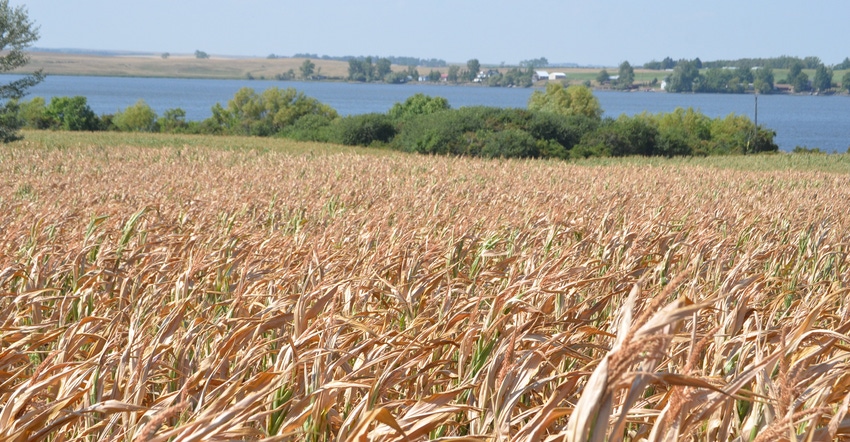August 18, 2021

With South Dakota rangeland and pastures rated 84% poor to very poor across the state, many cattle producers may be thinking about putting up silage for a feed source.
While cutting drought-damaged corn for silage may be the best alternative, Warren Rusche, South Dakota State University Extension beef feedlot management associate, says it’s critical that harvesting happens at the right moisture level to maximize silage value and minimize loss.
Related: Determine standing corn value
“Optimizing silage value starts by harvesting at the right moisture content. Harvest should start at no wetter than 70% moisture, with the goal of being completed before the crop is drier than 58% to 60% moisture, and the length of cut should be between a half to three-fourths of an inch,” Rusche says. “Relying on how the crop ‘looks’ to determine when to start chopping silage can often be deceiving. Drought-stressed corn is often wetter than it looks from the road.”
Rusche advises using a microwave oven and a gram scale to estimate moisture quickly and be much more precise with harvest decisions.
Strive for good fermentation
When it comes to packing and storage, Rusche says using inoculants, achieving the correct density and excluding oxygen are crucial for good fermentation and the reduction of nitrate concentrations.
“The ‘good’ bacteria require anaerobic conditions. These microbes produce lactic acid, resulting in a rapid drop in pH and maximum dry matter preservation,” Rusche says. “If oxygen is present, undesirable microbes, such as yeast and molds, feed on the most-digestible nutrients, reducing the amount of recoverable dry matter and the energy content of the silage.”
Using inoculants helps to increase the number of desirable bacteria, resulting in a faster pH drop and increased dry matter recovery. Inoculants can also improve aerobic stability when the silage is fed.
Rusche says packing the pile well can be challenging, especially with modern, high-capacity chopping equipment, but it is an essential step to exclude oxygen.
“Adding additional packing tractors may be necessary for sufficient capacity. Keep the layers uniform and less than six inches in depth,” Rusche says. “Packing needs to be continuous throughout the filling process.”
Cover the pile
While covering the silage pile is probably a least-desirable job on a farm, Rusche says it is vitally important to preserve feed value.
“An uncovered pile can lose 60% of the dry matter in the original top three feet. An oxygen-barrier film combined with a white-on-black plastic cover results in less loss compared to a layer of plastic alone,” Rusche says. “Cover the pile as soon as possible after harvest is completed. Waiting as long as 12 to 24 hours after harvest significantly increases storage losses.”
Finally, Rusche says keep safety in mind. “Slopes should be no steeper than 1 to 3 feet [1 foot of rise for 3 feet of horizontal] to reduce the chances of rollover,” Rusche says. “Keep the height of the pile no more than the unloading equipment can reach to reduce the risk of catastrophic, even life-threatening avalanches.”
Source: South Dakota State University Extension is solely responsible for the information provided and is wholly owned by the source. Informa Business Media and all its subsidiaries are not responsible for any of the content contained in this information asset.
You May Also Like




